
Chapter VIII of Immanuel Velikovsky’s Earth in Upheaval is called Poles Displaced. In this chapter Velikovsky explores a number of possible causes of ice ages. After the opening, introductory section, he proceeds to investigate the central theme of the chapter: Shifting Poles. This hypothesis was first proposed when it was observed that during the Pleistocene Ice Age the polar ice sheets were not arranged symmetrically around the North Pole. Significant parts of Siberia and Alaska remained ice-free, while Ireland and Britain were almost completely buried in thick sheets of Arctic ice:
All other theories of the origin of the Ice Age having failed, there remained an avenue of approach which already early in the discussion was chosen by several geologists: a shift of the terrestrial poles. If for some reason the poles had moved from their original positions, old polar ice would have moved out of the Arctic and Antarctic circles and into new regions. The glacial cover of the Ice Age could have been the polar icecap of an earlier epoch. Thus would be explained not only the origin of the ice cover but also the fact that its geographical position did not coincide with the present Polar Circles. (Velikovsky 101-102)
Julius Hann
Velikovsky’s first citation is a quotation from the Austrian meteorologist Julius von Hann, but it is taken from The Quaternary Ice Age by the Irish geologist William Bourke Wright, a work that was cited extensively in the section on The Norfolk Forest-Bed in Chapter V. Wright is quoting Hann’s Handbook of Climatology (1903):
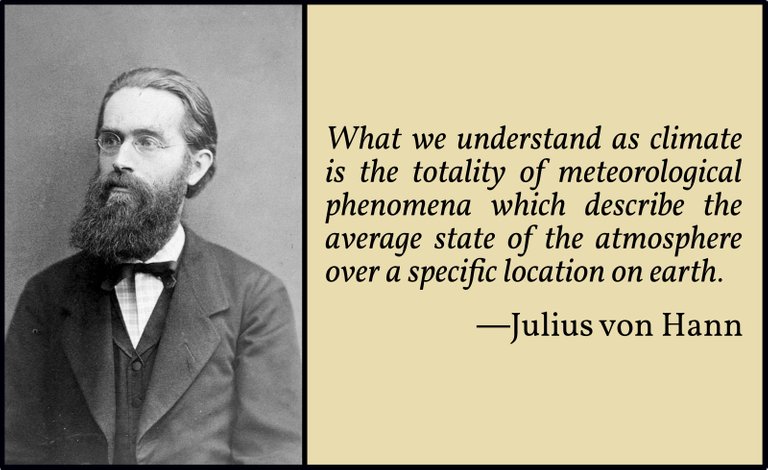
Changes in the Position of the Earth’s Axis.—According to the undoubted authority of Dr. Julius Hann, “the simplest and most obvious explanation of great secular changes in climate, and of the former prevalence of higher temperatures in the northern circumpolar region, would be found in the assumption that the earth’s axis of rotation has not always had the same position, but that it may have changed its position as the result of geological processes, such as extended rearrangements of land and water.” (Bourke 1914:300 : Hann & DeCourcy Ward 399)
If Velikovsky had looked up Hann’s original text (translated into English by the American climatologist Robert DeCourcy Ward), he would have learnt that Hann did not actually accept this hypothesis. The passage quoted above continues:
This hypothesis has frequently been advanced, but has still more frequently, and partly for geological reasons, been shown to be untenable. The question for us to consider in this connection is simply whether mathematical physics furnishes us with any warrant for believing in the possibility of a considerable change in the position of the earth’s axis. (Hann & DeCourcy Ward 399)
As this section of Hann’s text is less than two pages long, it may be worthwhile quoting the rest of it in full:
This mathematical problem has been investigated by G. H. Darwin, who has come to the conclusion that if the earth is considered to be quite rigid, the pole may have moved about 3° from its original position. If, however, the earth is considered plastic, as it undoubtedly is to a certain degree, so that it could readjust itself to the form of equilibrium, then there is the possibility of a cumulative effect, and the pole may have wandered 10-15° from its original position. No such cumulation is possible with respect to the obliquity of the ecliptic. More recently, Schiaparelli has taken up the question whether, and in what way, changes in the form of the earth may affect the position of the axis of rotation. The results reached agree essentially with those of Darwin.

It cannot yet be considered as proved beyond question by astronomical and mechanical considerations that the geographical pole has remained in the same position on the earth’s surface. The permanence of the pole may be a fact to-day, but it must also be an established fact so far as the earth’s past history is concerned. A permanent position of the earth’s pole is possible only in an earth of a certain rigidity. Geological processes, although they be insignificant, may, if they only operate long enough, interfere with the conditions of the permanence of the pole, even after these conditions have once been attained. Thus considerable movements of the pole may be brought about as long as the earth is not absolutely rigid.
The climatic consequences which would result from a displacement of the north pole to latitude 70° N., and longitude 20° W., have recently been discussed by Davis, in a highly instructive paper. The change in the limits of the wind and rain belts, which would follow such a displacement of the pole, would tend to glaciate north-western Europe and northwestern America; would place arid trade wind climates on the northern side of the belt now occupied by the equatorial rains of Africa and of South America, and would at the same time place the equatorial rains on the northern margin of the arid land areas now found in the southern parts of these continents. It is suggested that evidence of such changes in climate should be sought in the topographic forms and in the conditions of lake desiccation, or overflow, in torrid Africa and South America. (Hann & DeCourcy Ward 399-400)
George Darwin, son of the famous Charles, concluded his article with the following remark:
It is suggested that possibly the glacial period may not have been really one of great cold, but that Europe and North America may have been then in a much higher latitude, and that on the pole retreating they were brought back again to the warmth. There seems to be, however, certain geological objections to this view. (Darwin 332)
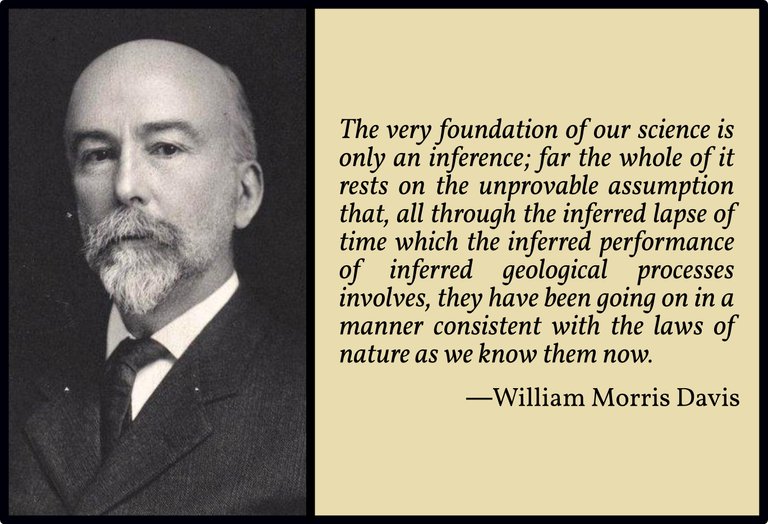
What are these geological objections to which both Hann and Darwin allude? William Morris Davis, in the paper cited by Hann, also mentions these objections but is not as firmly persuaded of their cogency:
It has been very thoroughly demonstrated by mathematicians and astronomers that such a displacement of the pole is an inadmissible explanation of the glacial period, because the pole cannot be displaced; but the oscillations of the earth’s axis, recently discovered by Chandler, were declared impossible by a high mathematical and astronomical authority, even after their existence was announced; and their possibility—that is, their explanation logically deduced from accepted postulates—was allowed only after an insistence on their existence and a reconsideration of the mathematical argument that at first proved them impossible. In very much the same way, the demands of geologists and biologists on the duration of past time have been resisted by certain physicists, on the ground that the whole period of time since the earth’s crust was formed could not have been so great as geologists thought necessary for the performance of geological processes or so great as biologists thought necessary for the evolution of species; but any one who has followed the arguments of the physicists in this matter must perceive that the strength of their results is not to be measured only by the perfection of the calculations through which the results are deduced, but also by the correctness of the fundamental postulates on which all the deductions are based. As these postulates are reconsidered and altered, the conclusions based upon them vary greatly. The conclusion that the nonmathematical geologist draws from all this is that, after all, he may as well go on observing and generalizing and calculating in his own small way, without regard to the limits which mathematicians set to his results; and if any conclusions that he reaches tend strongly against the deductions of the mathematicians, they will perhaps in time discover a new value of their postulated constants, so as to bring their deductions better into accord with the results of geological observation. It is therefore advisable that geologists should continue to make their own measure of the earth’s time scale by studies of the rate of denudation and deposition; they should by no means cease this kind of observational study and accept the dicta of the physicists. In the same way, students of geological climates may be advised not to accept too confidently the warnings of astronomers: they had better look over the earth and see what really happened in Pleistocene time, rather than contentedly declare in advance of observation that this or that climatic condition could not have happened. If the astronomers’ deductions are confirmed by observation they will stand, doubly supported; if they are shown to be erroneous, the astronomers will probably find the seat of their error in the omission of some essential postulates. Hence, without in the least intending to pre-announce any results, but desiring solely to point out the direction in which certain critical observations may be made, the following speculations are laid before the reader. (Davis 374-375)
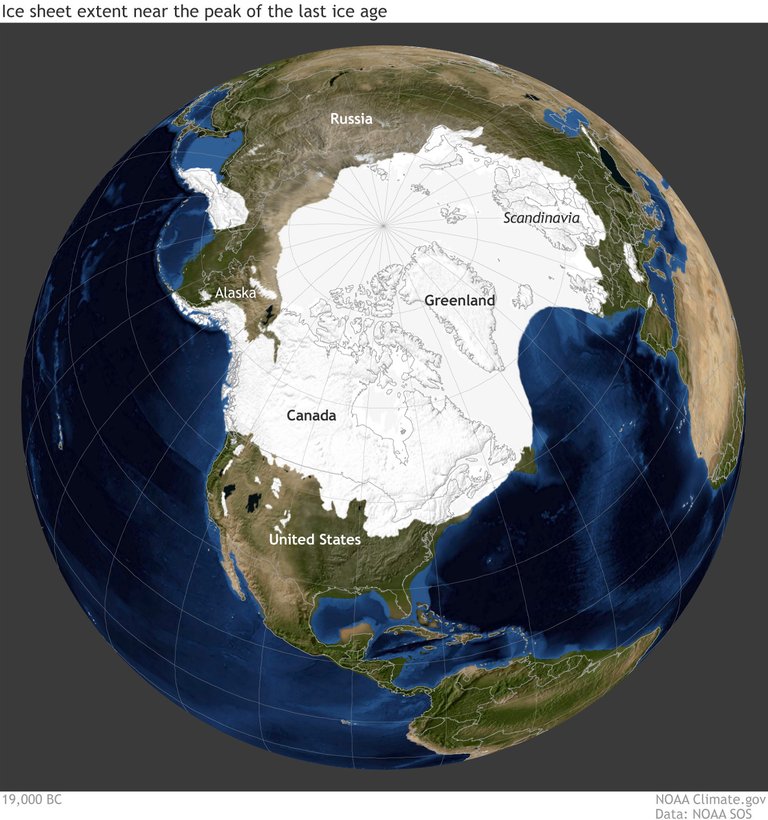
Mathematics
Over the course of the following few pages Velikovsky briefly reviews how the Pole Shift Hypothesis was subjected to astronomical and mathematical analysis in the second half of the 19th century. The debate involved astronomers, mathematicians, geologists and meteorologists. The geologists and the meteorologists hypothesized that several anomalies of the Ice Age could be accounted for by a pole shift, but the only geological cause they could devise to produce a pole shift was a redisposition of the continental masses and ice sheets on the surface of the globe. The astronomers and the mathematicians then calculated the effect of such a redisposition. Invariably, it was found that no redisposition of the surface mass could produce a pole shift of the required magnitude. The pole would only move by a few kilometres at most, and the shift would take place too slowly to account for the sequence of glacials and interglacials believed to have occurred during the Pleistocene Ice Age.
The scientists from this debate that Velikovsky cites are as follows:
- George B Airy
- George Darwin
- James Croll
- John Evans (recte John Francis Twisden)
- Lord Kelvin (William Thomson)
- Seth Carlo Chandler
- Simon Newcomb
- Giovanni Schiaparelli
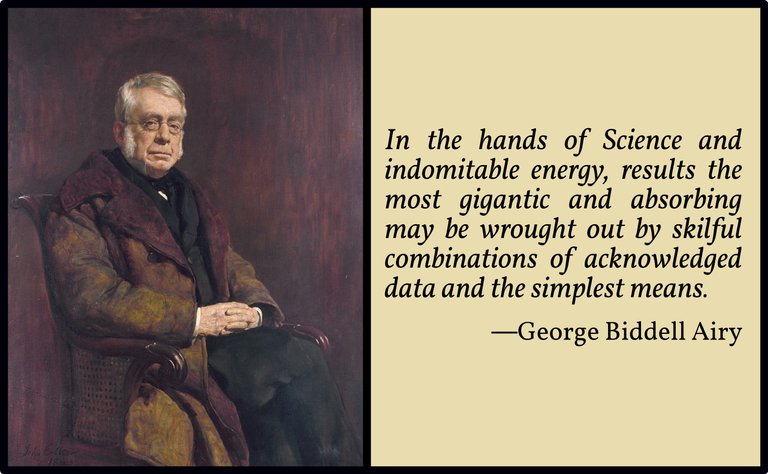
George B Airy
George Biddell Airy was an English mathematician and astronomer. He held the post of Astronomer Royal for almost fifty years (1835-1881). He is best remembered for establishing the line of longitude through the Royal Observatory at Greenwich as the Prime Meridian. On 22 September 1860 Airy briefly entered the debate with a letter to the The Athenæum, a British journal of literature, science and the fine arts. He was responding to the speculations of the engineer Henry James, which had appeared in The Athenæum on 25 August 1860. James had summoned no less a figure than Isaac Newton in defence of his theory:
I assume, as an admitted fact, that the mass of the earth was at first a fluid mass, and that it is at present a fluid mass with a hardened crust, and that the present oblate form of the earth is due to its rotation on its axis ...
In the 66th Proposition of the 1st Section of the Principia, Theorem 26, Corollary 22, Newton says: “But let there be added anywhere between the pole and the equator a heap of new matter like a mountain, and this by its perpetual endeavour to recede from the centre of its motion will disturb the motion of the globe, and cause its poles to wander about its superficies, describing circles about themselves and their opposite points.”—Motte’s Translation, 1729
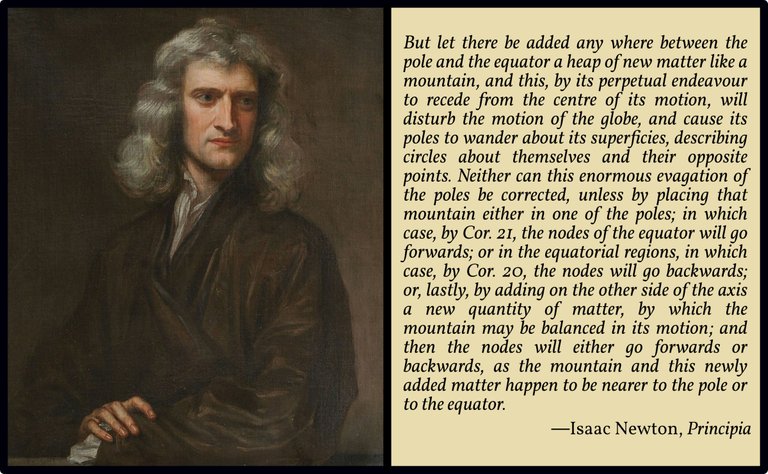
We have no evidence that within the historic period there has been an elevation of any mountain mass of such a magnitude as could produce an appreciable change in the position of the poles or the equator, and no records of astronomical observations could therefore show any such changes as have been adverted to. But we have undoubted evidence that in the former periods of the earth’s history great mountain regions, such as the Andes, the Himalayas, and the Rocky Mountains, have been thrown up in well-defined successive geological epochs; and knowing how vastly greater these mountain masses must originally have been from the great degradation to which in the lapse of ages they have been subjected, and before the degraded matter was spread out to fill up the inequalities of the surface of the earth, we can see a probable cause for a commencement of what Newton calls “the evagation of the poles,” and also the cause of a change in their position being again and again produced, until even the Arctic Regions may have been brought from a tropical position to their present position. (James 256 ... 257)
In his response to this Airy concedes the general principle but calls into question its adequacy to explain the magnitude of the climatic changes referred to by James:
The late numbers of the Athenæum contain some speculations by my friend Sir Henry James, on the possibility of a great change in the terrestrial position of the earth’s axis of rotation having been produced by the elevation of mountain masses. I do not question the accuracy of the principle of Sir Henry James’s speculations; but I very greatly doubt the adequacy, in magnitude, of the cause to explain the supposed effects.
To begin with the case most favourable for the production of a large effect, I will suppose the earth to be a perfectly rigid spheroid, which has, in distant ages and under proper circumstances, assumed the form of equilibrium, and whose axis of rotation coincides with its axis of figure and is a principal axis. And I will suppose a mountain mass to be elevated by something like a gaseous explosion (the hollow being filled up by the influx of neighbouring matter), in latitude not very different from 45°—(it is evident that such elevation, either at the pole or at the equator, will not disturb the parallelism of the axis of rotation).
As the mountain mass partook of the rotatory movement before its elevation, its elevation will not disturb, in any material degree, the velocity of rotation. The principal effect of the elevation is, that the axis of rotation is no longer a principal axis, that the principal axis of largest moment is now a little way beyond the present axis of rotation, and that the two other principal axes whose moments formerly were equal, now have moments very slightly different. The effects which follow are scarcely affected by this last modification.
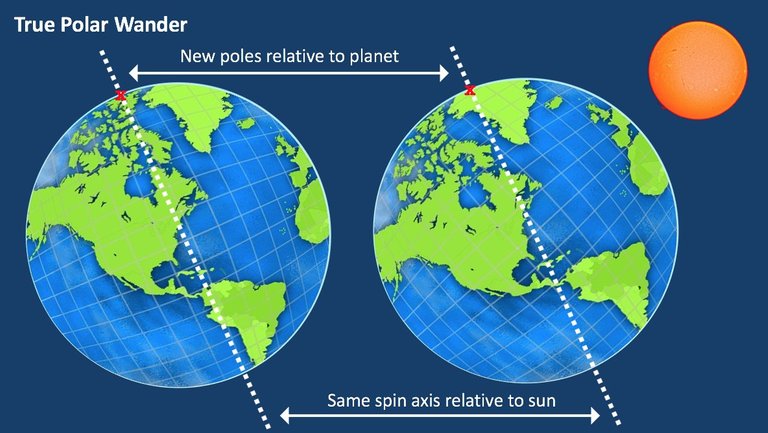
It is well known that, under these circumstances, the axis of rotation will wander in the solid earth, But it will not wander indefinitely; its pole will describe on the earth’s surface an ellipse not sensibly different from a circle, whose centre is the pole of the new principal axis, and after a certain time it will return to its former position. The greatest change, therefore, in the terrestrial position of the earth’s pole will be double the distance of the new principal axis from the former principal axis.
A very slight investigation suffices to show that the angular change of the position of the principal axis will depend upon the proportion which the moment of inertia of the mountain mass (or rather the increased moment of inertia from all the changes in its neighbourhood, some being elevations and some being depressions) bears to the excess of the moment of inertia round the polar axis above the moment of inertia round an equatorial axis. This latter excess is about half the moment of inertia of the equatorial protuberance, that is, half the moment of inertia of a mass of matter 25,000 miles long, 6,000 miles broad, and 13 miles deep. And what mountain mass can compare sensibly with this? Even if a mountain mass contained 1/1000 th part of this matter (which, I apprehend, is very far above the fact), the shift of the earth’s pole would be only two or three miles [3-5 km]; and this, though it would greatly surprise astronomers, and might sensibly affect the depth of waters in harbours, would produce no such changes of climate as those which it is desired to explain.
Now, let us suppose that the earth is not absolutely rigid, but that there is susceptibility to change of form, either from that degree of yielding or fracture to which most solid substances are liable, or from the hydrostatic pressure of internal fluid, This, as I conceive, puts an end to all supposition of change of axis. The first day’s whirl would again make the axis of rotation to be a principal axis, and the position of the axis is then permanent.
The density of the sea is so much less than that of the solid parts of the earth, that it is not very important for us to consider it; but, as far as it has any influence, it is evident that it would immediately receive that change of form to which I have adverted.
When the position of the axis of rotation within the earth is sensibly permanent, its position (excluding the effects of external actions) is also sensibly permanent in the heavens.
So far, therefore, as I am at present able to enter into the question, I entirely doubt the validity of the cause assigned by Sir Henry James for the changes of the earth’s climates. (Airy 384)
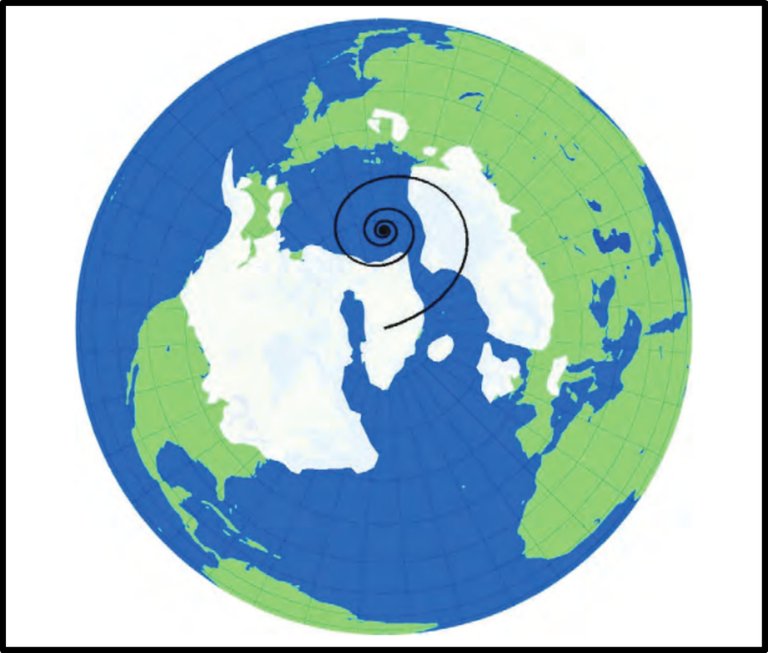
In reporting these results, Velikovsky fails to point out that Airy considers both cases: that in which the Earth is modelled as a perfectly rigid spheroid, as well as that in which it is assumed to be susceptible to some amount of deformation, whether this be due to the natural elasticity of all solids or to an internal fluidity of the Earth. Note also how Airy maintains that if the Earth were not absolutely rigid, any alteration in its axis of rotation would be undone after only one day.
George Darwin
Next Velikovsky briefly adverts to George Darwin’s contribution to the debate:
Sir George Darwin, mathematician and cosmologist, the renowned son of an illustrious father, made more thorough calculations on this point. If an ocean bed 15,000 feet [4.6 km] deep rose to become a continent the size of Africa 1100 feet [340 m] above sea level, and on the other side of the globe an equal area became depressed, the effect would be a shift of the poles by about two degrees. However, were the earth plastic, the poles would wander to a greater extent. (Velikovsky 103)
As we have seen, George Darwin’s article on the subject was cited by Julius Hann. If this was Velikovsky’s source for his brief remarks on Darwin, then he must have looked up Hann’s original paper and simply chose not to report Hann’s own doubts on the question of a pole shift. Although no citation is attached to the above paragraph, Velikovsky must have consulted Darwin’s original paper, as the figures he quotes are not in Hann (Darwin 331).
It is curious that Darwin calculates that the pole shift would be greater if the Earth were susceptible to plastic deformation. In Airy’s opinion a plastic Earth would not be subject to any pole shift. Velikovsky does not seem to be aware of this discrepancy. I cannot account for it. The modern consensus seems to be in agreement with Darwin on this point.
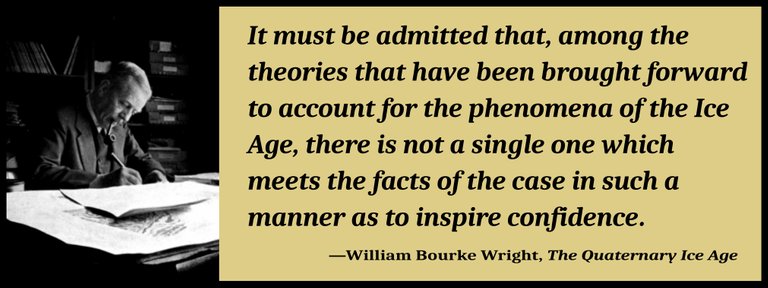
James Croll
We have already met the Scottish climatologist James Croll. In our article on The Norfolk Forest-Bed we saw that William Bourke Wright had discussed Croll’s Astronomical Theory of Climate Change, which explained ice ages in terms of changes to the Earth’s orbit. This theory was ultimately rejected by the scientific community, but Milutin Milankovitch’s modified version has met with greater acceptance.
Velikovsky reproduces without comment a short passage from Croll’s Discussions on Climate and Cosmology:
There probably never was an upheaval of such magnitude in the history of our earth. And to produce a deflection of 3° 17'—a deflection that would hardly sensibly affect climate—no less than one-tenth of the entire surface of the earth would require to be elevated to the height of 10,000 feet [3 km]. A continent ten times the size of Europe elevated two miles would do little more than bring London to the latitude of Edinburgh, or Edinburgh to the latitude of London. He must be a sanguine geologist indeed who can expect to account for the glaciation of this country, or for the former absence of ice around the poles, by this means. We know perfectly well that since the Glacial epoch there have been no changes in the physical geography of the earth sufficient to deflect the pole half-a-dozen miles, far less half-a-dozen degrees. (Croll 5)
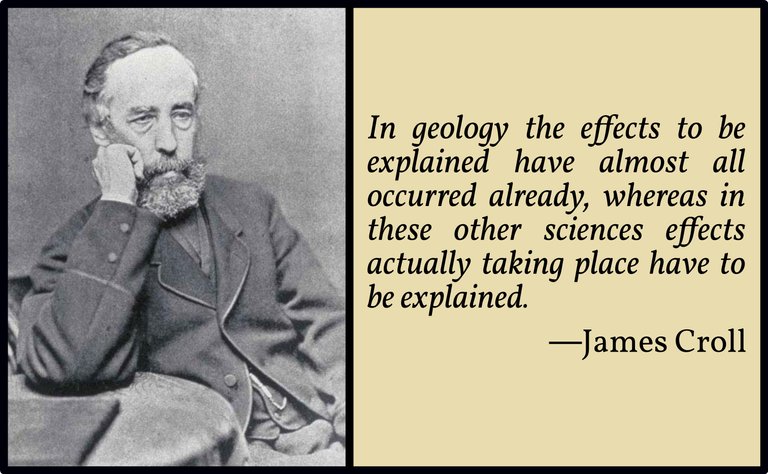
The two paragraphs preceding this read:
Variations in the obliquity of the ecliptic having been given up as hopeless, geologists and physicists are now inquiring whether the true cause [of the Glacial Epoch] may not be found in a change in the position of the earth’s axis of rotation. Fortunately this question has been taken up by several able mathematicians, among whom are Sir Wm. Thomson, Professor Haughton, Professor George Darwin, the Rev. J. F. Twisden, and others; and the result arrived at ought to convince every geologist how hopeless it is to expect aid in this direction.
Professor George Darwin has demonstrated that in order to displace the pole merely 1° 46' from its present position, 1/20 of the entire surface of the globe would require to be elevated to a height of 10,000 feet [3 km], with a corresponding subsidence in another quadrant. (Croll 4)
Croll’s confidence on this point, however, is undermined by the following remarks:
There is no geological evidence to show that, at least since Silurian times, the Atlantic and Pacific were ever in their broad features otherwise than they are now—two immense oceans separated by the Eastern and Western continents—and there is not the shadow of a reason to conclude that the poles have ever shifted much from their present position. (Croll 6)
During the Silurian Period (444-419 Mya), the Atlantic Ocean did not yet exist. Writing in 1885, Croll knew nothing of Plate Tectonics or Continental Drift. Is it possible that he was equally wrong about pole shifts?
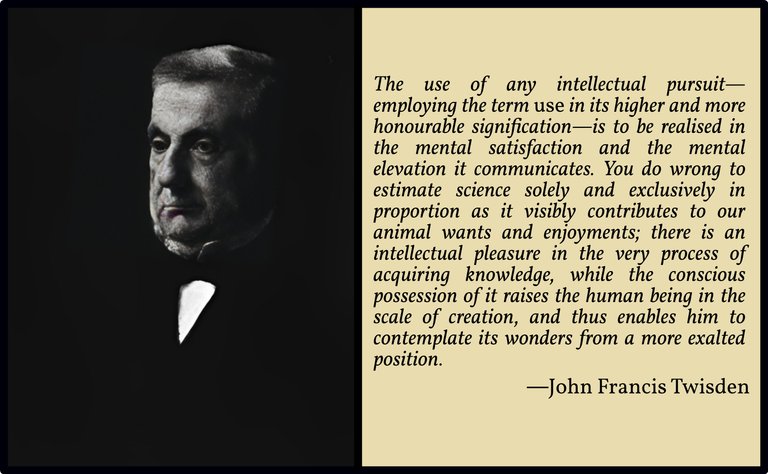
John Evans
The following paragraph cites someone called J Evans. Velikovsky is in error here. The paper he is quoting from was written by the mathematician John Francis Twisden. It was subsequently “communicated” to a meeting of the Geological Society of London on 21 February 1877 by the Society’s former President, the archaeologist and geologist John Evans—father of Arthur Evans, who rediscovered the Minoan Civilization. It was published, together with an account of the discussion which followed the reading, in the Society’s Quarterly Journal in 1878. The paper was written in response to a request Evans had made a year earlier, when he was still President of the Society:
- In the Anniversary Address delivered to the Geological Society on the 18th February 1876, by its President, J. Evans, Esq., the following passage occurs (p. 62):— “Taking our globe with the distribution of land and water as at present existing, I should like to inquire of mathematicians what would be the theoretical result of such a slight modification, geologically speaking, as the following:— Assume an elevation to the extent, on an average, of 4000 feet [1200 m] over the northern part of Africa, the centre of the elevation being, say, in 20° north latitude. Assume that this elevation forms only a portion of a belt around the whole globe, inclined to the equator at an angle of 20°, and having its most northerly point in the longitude of Greenwich, and cutting the equator at 90° of east and west longitude. Assume that along this belt the sea-bottom and what little land besides Africa it would traverse were raised 4000 feet above its present level over a tract 20° in width. Assume further that the elevation of this belt was accompanied by corresponding depression on either side of it, so as to leave the total volume of the mineral portion of the earth unaffected. Would not such a modification of form bring the axis of figure about 15° or 20° south of the present, and on the meridian of Greenwich—that is to say, midway between Greenland and Spitzbergen? and would not, eventually, the axis of rotation correspond in position with the axis of figure ?” (Twisden 35)
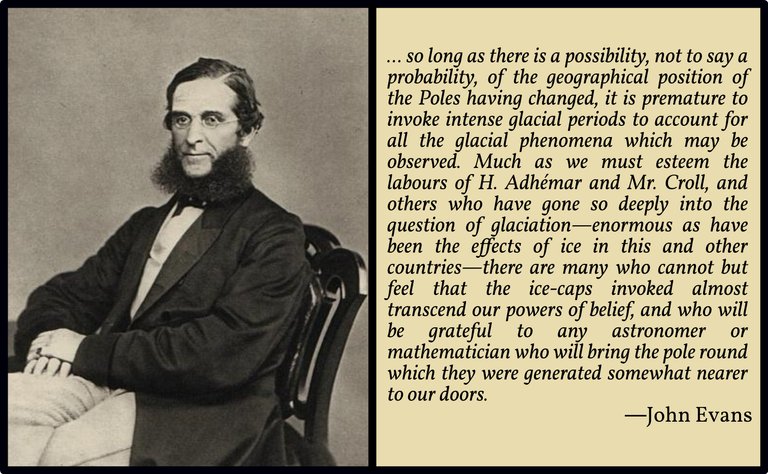
The passage Velikovsky alludes to is the conclusion:
J. Evans, a geologist, suggested that the astronomers reconsider their conclusion, on the supposition that the earth is a shell filled with molten matter. He envisaged the possibility that, under a change of load in the crust, the crust would be forced to alter its position in relation to the axis by as much as twenty degrees. (Velikovsky 103)
The full quotation is not quite as positive as Velikovsky implies:
- The conclusions to which the investigation leads may then be summed up thus: —
(1) That the displacement of the earth’s axis of figure from the axis of rotation that would be effected by the elevations and depressions of the kind suggested would be less than 10' of angle.
(2) That a displacement of as much as 10° or 15° could be effected by elevations and depressions of the kind suggested only if their heights and depths exceeded by many times the heights of the highest mountains.
(3) That under no circumstances could a displacement of 20° be effected by a transfer of matter of less amount than about a sixth part of the whole equatorial bulge.
(4) That even if a transfer of this enormous amount of matter were to take place, it would not of necessity produce any effect, and might only produce a small effect on the position of the axis of figure.
(5) That if by any means a considerable deviation were effected of the axis of figure from the axis of rotation, enormous tidal motions of the ocean would be produced, and its waters would sweep over the continents much as a rising tide sweeps over a low bank on a level shore. (Twisden 41)
Velikovsky has also misrepresented Twisden’s model of the earth as a shell filled with molten matter. What the paper actually says is quite different:
- It may be assumed that, at present, and within the more recent geological periods, the earth is, in the main, a solid body, the interior being intensely hot, but kept solid by the pressure of the superincumbent parts. This general statement is, of course, not inconsistent with there being tracts of molten matter at various places within the solid mass of the earth. (Twisden 42)

Lord Kelvin
The Irish physicist William Thomson—better known as Lord Kelvin—objected to Airy’s model of the Earth as a fluid mass with a hardened crust:
... “the earth cannot, as many geologists suppose, be a liquid mass enclosed in only a thin shell of solidified matter.” “At the surface and for many miles below the surface, the rigidity [of the earth] is certainly very much less than that of iron; and therefore at great depths the rigidity must be enormously greater than at the surface. ... Whatever be its age, we may be quite sure the earth is solid in its interior ... and we must utterly reject any geological hypothesis which... assumes the solid earth to be a shell of 30 or 100, or 500 or 1000 kilometers thickness, resting on an interior liquid mass.” (Velikovsky 103-104)
The first of these quotations has no citation, while the second is cited as follows:
Thomson: British Association for the Advancement of Science, Report of the 46th Meeting, 1876, Notices and Abstracts (1877), pp. 6, 7. (Velikovsky 103 fn 5)
This is incorrect. The first quotation and the first half of the second quotation are actually taken from Kelvin’s 1863 paper On the Rigidity of the Earth:
That the earth cannot, as many geologists suppose, be a liquid mass enclosed in only a thin shell of solidified matter, is demonstrated by the phenomena of precession and nutation ...
At the surface, and for many miles below the surface, the rigidity is certainly very much less than that of iron (how much less might be estimated if we had trustworthy data as to the velocity of natural or artificial earthquake waves through short distances); and therefore at great depths the rigidity must be enormously greater than at the surface. That both the rigidity and the resistance to compression should be much greater several hundred miles down than at the surface, seems a natural consequence of the enormous pressure experienced at those great depths by the matter of the earth. (Thomson 1863:573 ... 581

The second half of the second quotation is indeed from the 1877 Report:
Whatever may be its age, we may be quite sure the earth is solid in its interior; not, I admit, throughout its whole volume, for there certainly are spaces in volcanic regions occupied by liquid lava; but whatever portion of the whole mass is liquid, whether the waters of the ocean or melted matter in the interior, these portions are small in comparison with the whole; and we must utterly reject any geological hypothesis which, whether for explaining underground heat or ancient upheavals and subsidences of the solid crust, or earthquakes, or existing volcanoes, assumes the solid earth to be a shell of 30, or 100, or 500, or 1000 kilometres thickness, resting on an interior liquid mass. (Thomson 1877:4)
Velikovsky’s American spelling of kilometers and his muddled citations lead me to suspect that he took these quotations from a secondary source.
He next quotes Lord Kelvin’s argument that the internal rigidity of the Earth is proved by the oceanic tides:
Lord Kelvin showed that, if the earth were a liquid mass covered with a solid crust, “the solid crust would yield so freely to the deforming influence of sun and moon, that it would simply carry the waters of the oceans up and down with it, and there would be no sensible tidal rise and fall of water relatively to it. The state of the case is shortly this: The hypothesis of a perfectly rigid crust containing liquid, violates physics by assuming preternaturally rigid matter, and violates dynamical astronomy. ...” (Velikovsky 104)
This quotation is referred to the Report of 1877, and this is quite correct (Thomson 1877:7).

Velikovsky concludes his discussion of Lord Kelvin with the following unsourced paragraph:
Lord Kelvin admitted, however, that a larger shifting of the poles would be possible if the earth had a solid nucleus in the interior separated by a liquid layer from the outer crust. This he regarded as improbable and directed his argument against an earth with a molten interior. (Velikovsky 104)
This is taken from the 1863 paper on the rigidity of the Earth:
- But the only possible ground on which it could be maintained that the earth as a whole is less rigid than a solid steel globe of the same dimensions, is to assume that there is an enormous liquid vesicle, or a solid nucleus separated by a fluid layer from the outer crust, in the interior, and that the loss of precessional effective moment of inertia, owing to this portion not being carried round in the precessional movement, is almost exactly compensated by a diminution of the generating couple in very nearly the same proportion by elastic yielding. Although, considering Halley’s theory of the secular variation of terrestrial magnetism, and the general accordance of its results with the actual phenomena as demonstrated by the best observations made up to the present time, it would be most rash to say that it is very improbable there is a solid iron nucleus sunk to the centre of a hollow central vesicle of fluid in the earth, yet it seems to me excessively improbable that the defect of moment of inertia due to fluidity in the earth’s interior bears approximately the same ratio to the whole moment of inertia, as the actual elastic yielding bears to the yielding which would take place if the earth were perfectly fluid. (Thomson 1863:580)
Lord Kelvin considered it improbable that there is a solid iron nucleus sunk to the centre of a hollow central vesicle of fluid in the earth, but this is of course the model currently accepted by geologists.
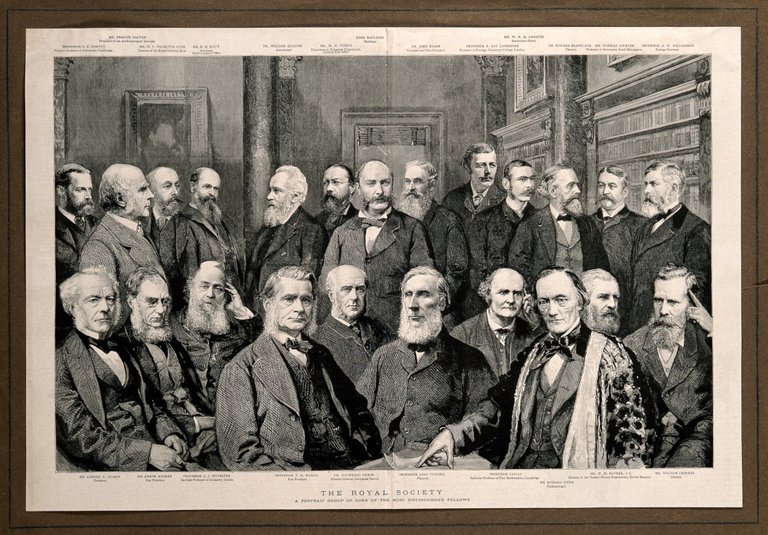
George Darwin Again
Velikovsky briefly cites another relevant paper by George Darwin:
George Darwin supported the views of Lord Kelvin, presenting figures to show that the earth could not have a fluid nucleus; its rigidity must be at least as great as that of steel. (Darwin 1882:23)
About fifteen years ago Sir William Thomson pointed out that, however it be constituted, the body of the earth must of necessity yield to the tidal forces due to the attraction of the sun and moon, and he discussed the rigidity of the earth on the hypothesis that it is an elastic body.
If the solid earth were to yield as much as a perfect fluid to these forces, the tides in an ocean on its surface would necessarily be evanescent, and if the yielding be of smaller amount, but still sensible, there must be a sensible reduction in the height of the oceanic tides.
Sir William Thomson appealed to the universal existence of oceanic tides of considerable height as a proof that the earth, as a whole, possesses a high degree of rigidity, and maintained that the previously received geological hypothesis of a fluid interior was untenable. (Darwin 1883:22)
Following his calculations, Darwin draws the conclusion:
On the whole we may fairly conclude that, whilst there is some evidence of a tidal yielding of the earth’s mass, that yielding is certainly small, and that the effective rigidity is at least as great as that of steel. (Darwin 1883:23)

Velikovsky concludes his account of the mathematical analysis of the Pole Shift Hypothesis with a quotation from a mathematician:
Thus the efforts of the geologists to explain the origin of the ice cover by the shifting of the poles foundered on the calculations of the mathematicians. A mathematician made the point clear:
“Mathematicians may seem to geologists almost churlish in their unwillingness to admit a change in the earth’s axis. Geologists scarcely know how much is involved in what they ask. They do not seem to realize the vastness of the earth’s size, or the enormous quantity of her motion. When a mass of matter is in rotation about an axis, it cannot be made to rotate about a new one except by external force. Internal changes cannot alter the axis, only the distribution of the matter and motion about it. If the mass began to revolve about a new axis, every particle would begin to move in a different direction. What is to cause this? ... Where is the force that could deflect every portion of it, and every particle of the earth into a new direction of motion?” (Velikovsky 104-105)
The quotation is taken from the June 1878 issue of The Geological Magazine. The article was written by Rev Edwin Hill, Fellow and Tutor of St John’s College, Cambridge, and bears the title On the Possibility of Changes in the Earth’s Axis. Ordained as a deacon in 1867 and a priest in 1868, Hill served as rector of Cockfield, Suffolk, from 1889 till 1929. He died in 1933 at the age of 90. Although he began his studies as a mathematician, he later turned to geology and it was in this field that he achieved distinction:
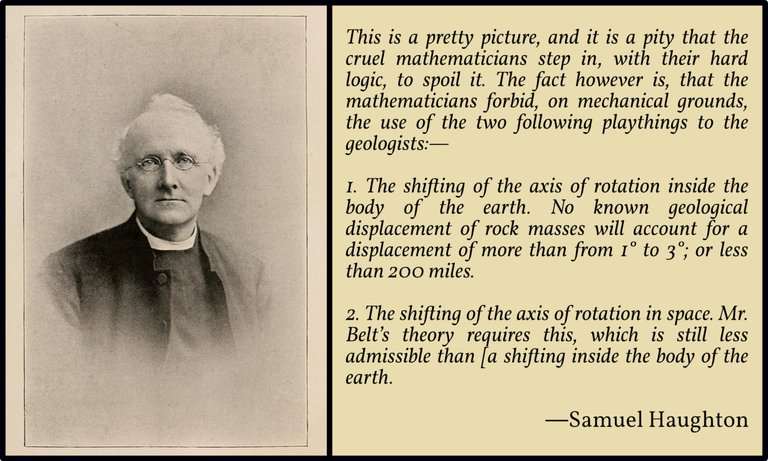
The possibility of change in the position of the Earth’s axis seems periodically to attract attention. This is happening now. Professor Haughton has written upon this subject, Sir William Thomson has alluded to it, while two important papers have been read upon it, one by Professor Twisden before the Geological Society, the other by Mr. George H. Darwin before the Royal Society. This article is an endeavour to exhibit to the general reader the assumptions with which they have started, and the results they have obtained. (Hill 262)
The Chandler Wobble
As we have seen, Isaac Newton predicted that the Earth, as it rotated upon its axis, would experience a wobbling motion, or nutation, if there be added anywhere between the pole and the equator a heap of new matter like a mountain. In 1765 the Swiss mathematician Leonhard Euler, who made a special study of the mechanics of rotating bodies, also predicted the existence of a free nutation in the rotation of the Earth due to the fact that the Earth’s axis of rotation does not quite coincide with its axis of symmetry. He calculated that this wobble would have a period of approximately 305 days (Euler 193 : Chisholm 267).
Several famous scientists attempted to observe Euler’s wobble—Friedrich Wilhelm Bessel and James Clerk Maxwell among them—but all without success. Then, between 1884 and 1891, an amateur astronomer from Boston known as Seth Carlo Chandler stumbled upon it while calibrating an instrument of his own design, the Almucantar. Chandler noticed that the latitude of Harvard Observatory, where he was working, underwent a cyclic change, with a period of 427 days. Initially Chandler thought that this was not a real effect, but when he learnt of a similar discovery by the German astronomer Karl Friedrich Küstner in Berlin, he repeated his own observations and discovered that they were consistent with those of Küstner.
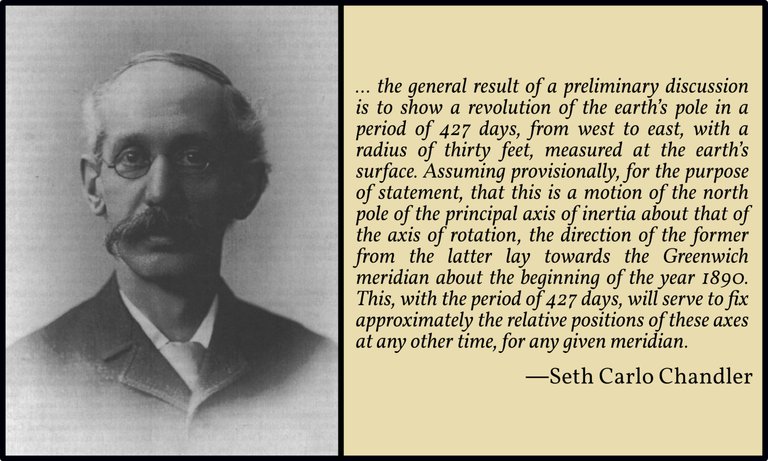
The Chandler Wobble, as it is called, amounts to a change of approximately 9 metres in the point at which the axis of rotation intersects the surface of the Earth. Its period is now estimated to be about 433 days. When Chandler announced his discovery in 1891, the Canadian astronomer Simon Newcomb was initially skeptical—the period was about one-and-a-half times as great as the Eulerian Period. But a little research convinced him that Chandler had discovered Euler’s elusive wobble, and he believed that he could account for the discrepancy between Euler’s predicted period of 305 days and the one Chandler observed:
Mr. Chandler’s remarkable discovery, that the apparent variations in terrestrial latitudes may be accounted for by supposing a revolution of the axis of rotation of the earth around that of figure, in a period of 427 days, is in such disaccord with the received theory of the earth’s rotation that, at first, I was disposed to doubt its possibility. But I am now able to point out a vera causa which affords a complete explanation of this period. (Newcomb 82)
Euler had assumed that the Earth was perfectly rigid, which is not the case.
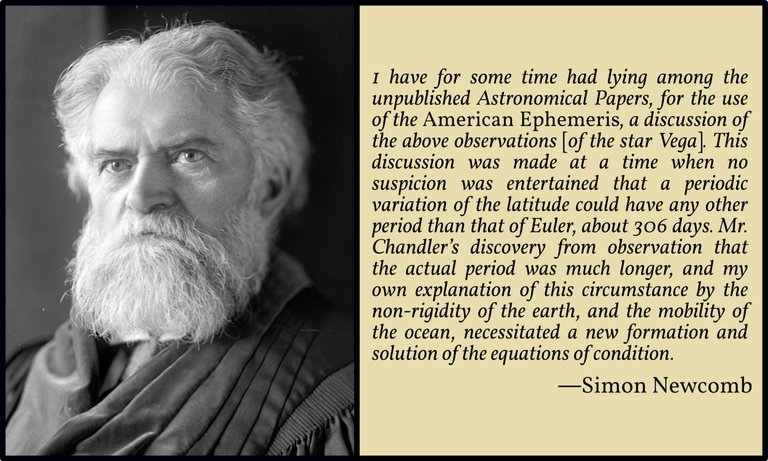
Giovanni Schiaparelli
The last scholar cited in this section is the Italian astronomer Giovanni Virginio Schiaparelli, best known for his “discovery” of the Martian canals. Schiaparelli continued to believe in the existence of these canali, or channels, to the end of his life—he died in 1910. He never conceded that they were anything other than natural formations, though he did debate this possibility (Gratacap 262 ff). On the question of the long-term stability of the Earth’s axis of rotation, Velikovsky cites Schiaparelli’s paper De la rotation de la terre sous l’influence des actions géologiques, which was published in St Petersburg in 1889:
Schiaparelli wrote: “The permanence of the geographical poles in the very same regions of the earth cannot yet be considered as incontestably established by astronomical or mechanical arguments. Such permanence may be a fact today, but it remains a matter still to be proven for the preceding ages of the history of the globe.” He thought that a series of geological changes could, by their cumulative effect, step by step, destroy the equilibrium of the earth, on condition that the earth is not an absolutely rigid body. “The possibility of great shifting of the pole is an important element in the discussion of prehistoric climates and the distribution, geographic and chronologic, of ancient organisms. If this possibility is admitted, it will open new horizons for the study of great mechanical revolutions that the crust of the earth underwent in the past. We cannot imagine, for instance, that the terrestrial equator could take the place of a meridian, without great horizontal tension in some regions, that would open great rifts; and in other regions, horizontal compressions would have taken place, such as are imagined today in order to explain the folding of the strata and formation of mountains.” (Velikovsky 106)
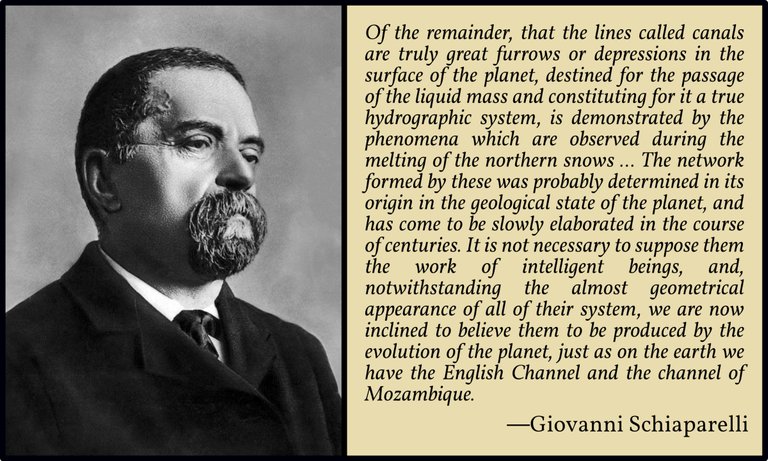
But which caused which?
Thus, finally, an eminent astronomer, after a thorough examination of the problem, went over to the side of the geologist. However, he reasoned in a circle: the geological changes would cause the terrestrial poles to move from their places, and the motion of the poles from their places would cause geological and climatal changes. (Velikovsky 106)
Velikovsky concludes this section by pointing out the inadequacy of a gradual pole shift:
A gradual and slow displacement of the poles or a tilting of the axis would explain the geographical position of the ice in the past, but it would not account for other phenomena observed, such as the extent of the glacial cover and the suddenness with which it enveloped the earth. Agassiz realized this, and in support of the idea that the ice ages came suddenly, he quoted Cuvier. Cuvier died before the Ice Age theory was promulgated, but he understood that the climate must have altered suddenly in order to encase the large quadrupeds of Siberia in ice as soon as they were killed, and to preserve their bodies from decay since then. “Therefore,” wrote Cuvier in prophetic anticipation of the debate that has been renewed for over a hundred years, down to our times, “all hypotheses of a gradual cooling of the earth, or a slow variation of the inclination or position of the terrestrial axis, are inadequate.” (Velikovsky 107. The italics are Velikovsky’s.)
The work in which Louis Agassiz quoted Cuvier is his Études sur les glaciers [Studies on Glaciers], and the work from which he took the quotation is Georges Cuvier’s Recherches sur les ossemens fossiles [Researches on Fossilized Bones] (Second Edition, Volume 1). I presume Velikovsky translated the passage himself:
« Ainsi toutes les hypothèses d’un refroidissement graduel de la terre, ou d’une variation lente, soit dans l’inclinaison, soit dans la position de l’axe du globe, tombent d’elles-mêmes. » (Agassiz 311 : Cuvier 203)
Velikovsky incorrectly cites page 202 in Cuvier’s text—the passage Agassiz quoted is on page 203. He also modernizes the title of Cuvier’s work to Recherches sur les ossements fossiles.
And that’s a good place to stop.
References
- Louis Agassiz, Études sur les glaciers, Jent et Gassmann, Neuchâtel (1840)
- George B Airy, Change of Climate, The Athenæum, Number 1717, 22 September 1860, Page 384, John Francis, London (1860)
- Seth Carlo Chandler, On the Variations of Latitude, The Astronomical Journal, Volume 11, Number 8 (Issue 248), Pages 59-61, Boston (1891)
- Hugh Chisholm (editor), Encyclopædia Britannica, Eleventh Edition, Volume 16, Cambridge University Press, Cambridge (1911)
- John Kaye Charlesworth, Obituary: William Bourke Wright (1876-1939), The Irish Naturalists’ Journal, Volume 7, Number 9, Pages 250-253, Irish Naturalists’ Journal Ltd, Dublin (1940)
- James Croll, Discussions on Climate and Cosmology, Edward Stanford, London (1889)
- Georges Cuvier, Recherches sur les ossements fossiles, New Edition, Volume 1, G Dufour et E D’Ocagne, Paris (1821)
- George Darwin, On the Influence of Geological Changes on the Earth’s Axis of Rotation, Proceedings of the Royal Society of London, Volume 25, Pages 328-332, The Royal Society, London (1876)
- George Darwin, A Numerical Estimate of the Rigidity of the Earth, Nature, Volume 27, Pages 22-23, Macmillan and Company, London (1883)
- William Morris Davis, A Speculation in Topographical Climatology, American Meteorological Journal, Volume 12, Number 12, Pages 372-381, (1896)
- Leonhard Euler, Du mouvement de rotation des corps solides autour d’un axe variable, Mémoires de l’Académie Royale des Sciences et Belles Lettres, Year 1758, Volume 14, Pages 154-193, Haude et Spener, Berlin (1765)
- L P Gratacap (editor), The Certainty of a Future Life in Mars, Brentano’s, New York (1903)
- Edmond Halley, A Theory of the Variation of the Magnetical Compass, Philosophical Transactions of the Royal Society of London, Volume 13, Pages 208-221, The Royal Society, London (1683)
- Julius von Hann, Robert DeCourcy Ward (translator), Handbook of Climatology, Part 1, General Climatology, The Macmillan Company, London (1903)
- Samuel Haughton, Notes on Physical Geology: No 1: Preliminary Formulae Relating to the Internal Change of Position of the Earth’s Axis Arising from Elevations and Depressions Caused by Geological Changes, Proceedings of the Royal Society of London, Volume 26, Pages 51-55, The Royal Society, London (1877)
- Hugo Hergesell, Die Rotation der Erde unter dem Einfluss geologischer Prozesse, Dr A Petermanns Mitteilungen aus Justus Perthes’ Geographischer Anstalt, Volume 38, Pages 42-45, Justus Perthes, Gotha, Germany (1892)
- Edwin Hill, On the Possibility of Changes in the Earth’s Axis, The Geological Magazine, Decade 2, Volume 5, Issue 6, Pages 262-266, Trübner & Co, London (1878)
- Henry James, On the Change of Climate in Different Regions of the Earth, The Athenæum, Number 1713, 25 August 1860, Pages 256-257, John Francis, London (1860)
- Simon Newcomb, On the Periodic Variation of Latitude, and the Observations with the Washington Prime-Vertical Transit, The Astronomical Journal, Volume 11, Number 11 (Issue 251), Pages 81-82, Boston (1891)
- Giovanni Schiaparelli, De la rotation de la terre sous l’influence des actions géologiques, Mémoire présenté à l’Observatoire de Poulkova, Imprimerie de l’academie impériale des sciences, St Petersburg (1889)
- William Thomson (Lord Kelvin), On the Rigidity of the Earth, Philospophical Transactions of the Royal Society, Volume 153, Pages 573-582, The Royal Society, London (1863)
- William Thomson (Lord Kelvin), Address by Professor Sir William Thomson etc, Report of the Forty-Sixth Meeting of the British Association for the Advancement of Science: Notices and Abstracts, or Miscellaneous Communications to the Sections, Pages 1-12, John Murray, London (1876)
- John Francis Twisden, On Possible Displacements of the Earth’s Axis of Figure Produced by Elevations and Depressions of Her Surface, The Quarterly Journal of the Geological Society of London, Volume 34, Pages 35-48 Longmans, Green, Reader, and Dyer, London (1878)
- Immanuel Velikovsky, Earth in Upheaval, Pocket Books, Simon & Schuster, New York (1955, 1977)
- Lance Weaver, Were the Ice Ages Really Just True Polar Wandering Events? UtahGeology, Online (2020)
- William Bourke Wright, The Quaternary Ice Age, Macmillan and Co, Limited, London (1914)
Image Credits
- Pole Shifts and Ice Ages: © Lance Weaver, UtahGeology, Fair Use
- Julius von Hann: Josef Löwy (photographer), Bibliothèque nationale de France, Paris, Public Domain
- George Darwin: J Russell & Sons (photographers), Public Domain
- William Morris Davis: Bibliothèque nationale de France, Public Domain
- Maximum Glaciation of the Pleistocene Ice Age: NOAA SOS, Public Domain
- George Biddell Airy: John Collier (artist), Royal Museums Greenwich, Royal Observatory, Greenwich, Public Domain
- Isaac Newton: Godfrey Kneller (artist), Isaac Newton Institute, University of Cambridge, Cambridge, Public Domain
- True Polar Wander: Discover Magazine, © Kalmbach Media Co, Fair Use
- [Geographic Shift of the North Pole](file:///home/brendan/Downloads/33712-1.pdf): © Willy Woelfli & Walter Baltensperger, in What Caused the Ice Ages? Hwee-San Lim (editor), New Achievements in Geoscience, InTech, Rijeka, Croatia (2012), Fair Use
- William Bourke Wright: The Irish Naturalists’ Journal, Volume 7, Number 9, Pages 250-253, Irish Naturalists’ Journal Ltd, Dublin (1940), Public Domain
- James Croll: Anonymous Photograph, James Campbell Irons, Autobiographical Sketch of James Croll, Edward Stanford, London (1896), Public Domain
- John Francis Twisden: Janet Brennand (artist), Great Hall, Bradbourne House, Kent, Public Domain
- John Evans: Anonymous Photograph, Public Domain
- William Thomson (Lord Kelvin): Elizabeth King (artist), National Portrait Gallery, London, Public Domain
- Statue of Lord Kelvin (Botanic Gardens, Belfast): © William Murphy (photographer), Creative Commons License
- Edmond Halley: Richard Phillips (artist), National Portrait Gallery, London, Public Domain
- Some Fellows of the Royal Society (1888): Anonymous Engraving, Wellcome Images, Public Domain
- St Peter’s Church, Cockfield (Suffolk): © John Fielding (photographer), Creative Commons License
- Samuel Haughton: John Chancellor (photographer), The Irish Naturalist, Volume 7, Eason & Son, Limited, Dublin (1898), Public Domain
- Seth Carlo Chandler: Anonymous Photograph, Public Domain
- Simon Newcomb: George W Harris & Martha Ewing (photographers), Library of Congress, Washington, DC, Public Domain
- Giovanni Schiaparelli: Anonymous Photograph, Public Domain
Online Resources
